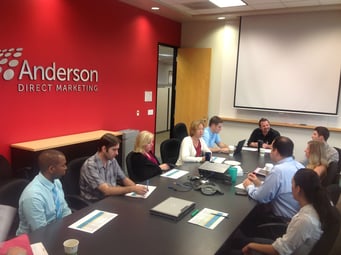There is so much to learn. And if we’re listening and open-minded, we’ll learn something new every day. From new emerging technologies, to new media, to relationship-building skills, our teams are hungry to improve their skill sets. Quite frankly, that makes us very happy. But it also begs a question. “How does a business educate their employees and get the best ROI on their training budget?”
The answer—Turn the student into the teacher.
Telling someone, “Congratulations! You’ve been approved to go to The Next Big Conference!” is rewarding, but when you add, “And you get to share what you’ve learned with the rest of the team,” they get this glazed look in their eyes and in the worst case, may even reconsider their interest in attending. So, how do you take the fear out of turning your employees from students to teachers? Here are 5 easy questions that your students-turned-teachers can answer to create an interesting, insightful and educational presentation.
- Why did they want to go to the conference? I am sure there were a few things they wanted to learn and chances are that there will be a few interesting facts about why going to the conference was a good choice. If they are an over-achiever, they could create a handout that their audience can follow along with and include “missing words” that they can fill in to increase participation.
- What were the three most important things they learned? This is really the “Cliff Notes” version of the training. They should give examples of what they thought they were going to learn and then provide examples of what they actually learned. What was the same/different?
- What three pieces of data support what they learned? In other words, why should the audience they are presenting to believe what they are saying? They should share some of the examples from the speaker that support their learnings and ask the audience if they have any examples that support these learnings. They should also ask for a different point of view.
- What should the business do with the learnings? Give examples on how the things they learned can change how they do their business. Open up the topic for the room and ask for additional feedback. What has the audience seen in the industry? How do they think things are changing?
- How do I make sure that my audience has the right take-away? Sometimes it takes a few minutes for the audience to catch on to what they are sharing and why it is important. It is always a good idea to repeat the key messages and ask for any questions.
Learning something new is important. It keeps us thinking and challenging the status quo. Implementing what we learn is a talent that takes some drive and determination. The next time learnings are shared, take the opportunity to drive change. Then, the student will not only become the teacher, but will become an influencer and catalyst for change—two talents every one of us should strive to develop.
What have you learned recently that changed improved your ROI? Or the way you look and manage your business? Your students are listening.




